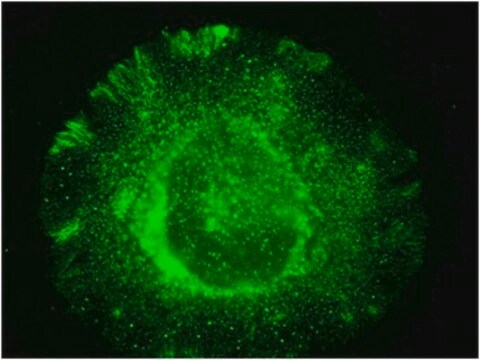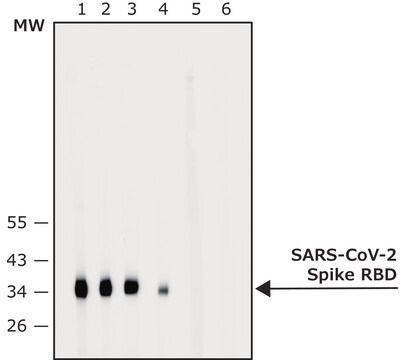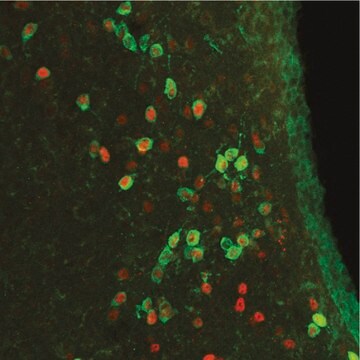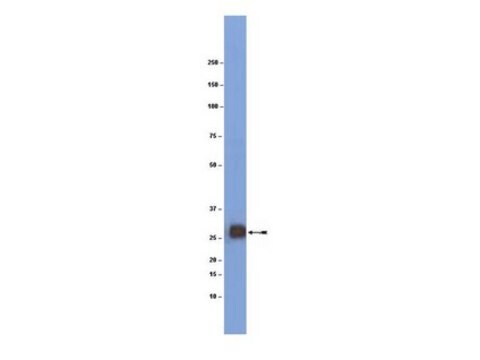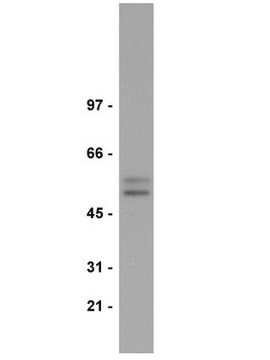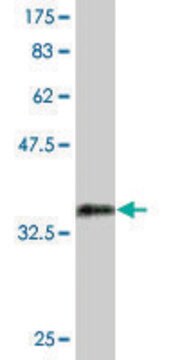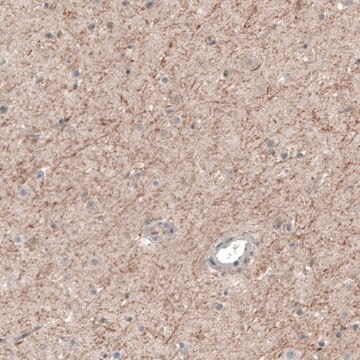MABC616
Anti-NOX4 Antibody, clone 10A8.1
culture supernatant, clone 10A8.1, from mouse
Sinónimos:
NADPH oxidase 4, Kidney oxidase-1, Kidney superoxide-producing NADPH oxidase, KOX-1, Renal NAD(P)H-oxidase, NOX4
About This Item
Productos recomendados
biological source
mouse
Quality Level
antibody form
culture supernatant
antibody product type
primary antibodies
clone
10A8.1, monoclonal
species reactivity
human
technique(s)
immunohistochemistry: suitable
western blot: suitable
isotype
IgG2bκ
NCBI accession no.
UniProt accession no.
shipped in
dry ice
target post-translational modification
unmodified
Gene Information
human ... NOX4(50507)
General description
Specificity
Immunogen
Application
Apoptosis & Cancer
Toxicology & Drug Resistance
Quality
Western Blotting Analysis: A 1:1,000 dilution of this antibody detected NOX4 in 10 µg of human kidney tissue lysate.
Target description
Physical form
Storage and Stability
Handling Recommendations: Upon receipt and prior to removing the cap, centrifuge the vial and gently mix the solution. Aliquot into microcentrifuge tubes and store at -20°C. Avoid repeated freeze/thaw cycles, which may damage IgG and affect product performance.
Other Notes
Disclaimer
¿No encuentra el producto adecuado?
Pruebe nuestro Herramienta de selección de productos.
Storage Class
10 - Combustible liquids
wgk_germany
WGK 2
Certificados de análisis (COA)
Busque Certificados de análisis (COA) introduciendo el número de lote del producto. Los números de lote se encuentran en la etiqueta del producto después de las palabras «Lot» o «Batch»
¿Ya tiene este producto?
Encuentre la documentación para los productos que ha comprado recientemente en la Biblioteca de documentos.
Nuestro equipo de científicos tiene experiencia en todas las áreas de investigación: Ciencias de la vida, Ciencia de los materiales, Síntesis química, Cromatografía, Analítica y muchas otras.
Póngase en contacto con el Servicio técnico
